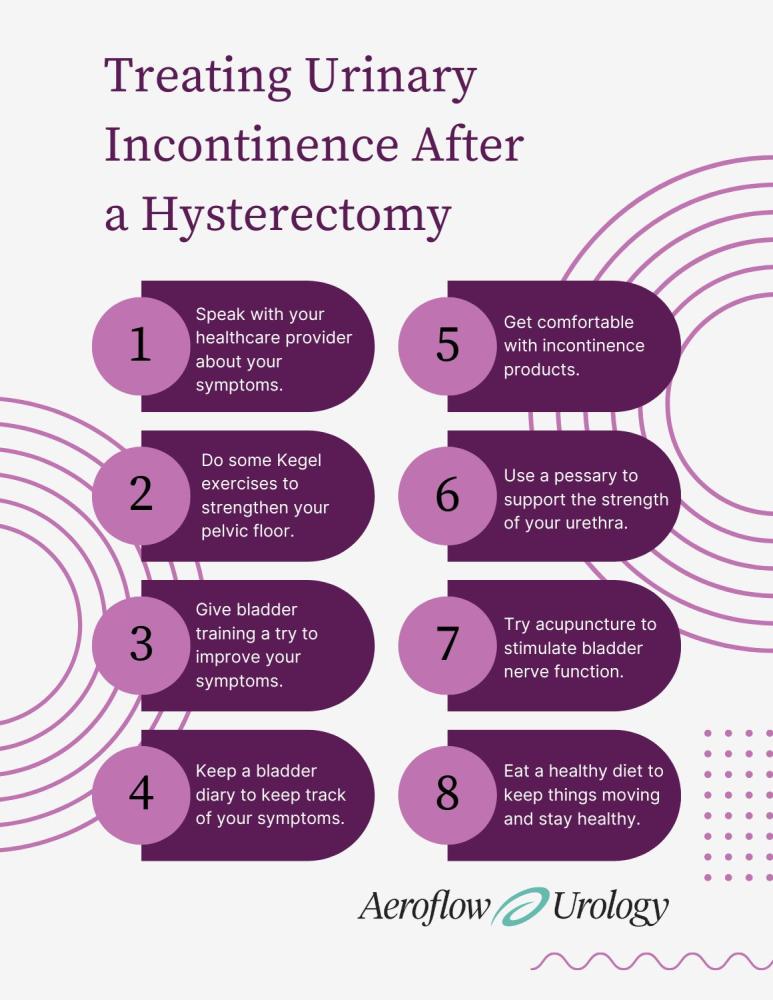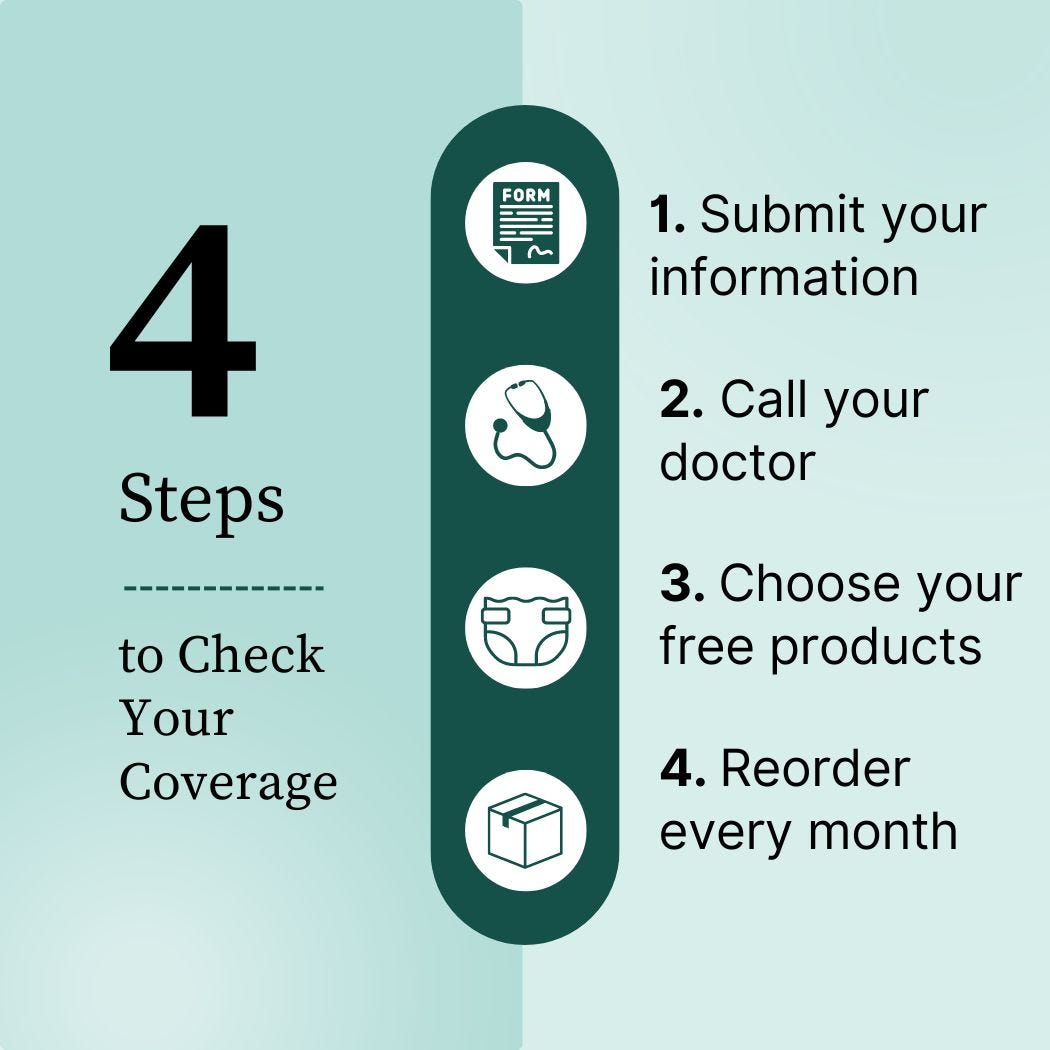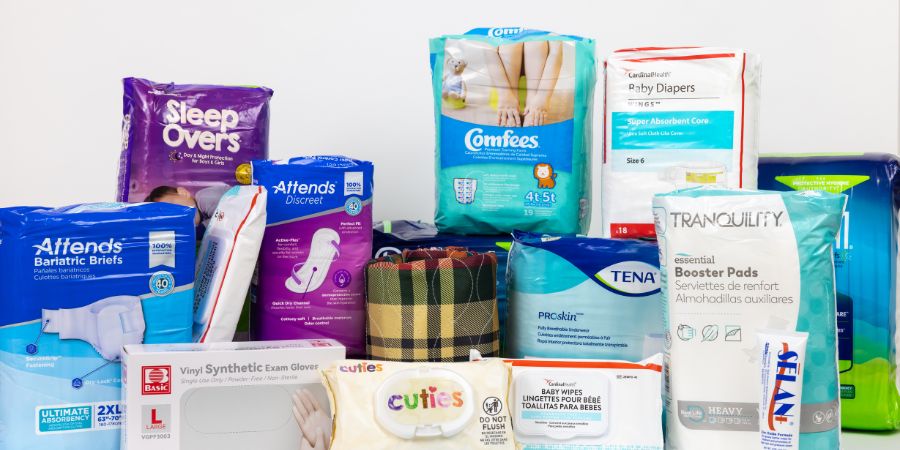Key Takeaways:
-
Pelvic floor dysfunction is a common complication following hysterectomies, with up to 60% of women experiencing urinary incontinence post-surgery.
-
Hysterectomies may increase your risk of developing urinary incontinence due to damaged bladder nerves, removal of ovaries, or damage to the urinary sphincter.
-
Performing Kegel exercises, following a bladder training routine, and using bladder control supplies may reduce symptoms of urinary incontinence after a hysterectomy.
Did you know that the most common complication found among women who have undergone hysterectomies is pelvic floor dysfunction? Did you also know that hysterectomies increase the risk of incontinence in women?
If you're one of the 600,000 women who have had a hysterectomy and are encountering these issues, don't worry! This post will explain why you're experiencing incontinence and share eight ways to manage it so you can feel more confident and in control of your health.
Why Might I Need A Hysterectomy?
A hysterectomy is a surgical procedure that removes the uterus. Hysterectomies are usually done to treat chronic menstruation pain, heavy bleeding, endometriosis, uterine fibroids (tumors that are not cancerous), pelvic organ prolapses such as uterine prolapse, cervical cancer, and uterine lining issues.
The procedure can also involve removing the cervix, ovaries, fallopian tubes, or a combination of these parts, depending on the type of hysterectomy performed.
After your hysterectomy, you may experience side effects such as:
- Vaginal dryness.
- Menopause
- Urinary incontinence (UI).
- Hot flashes.
- Sleeping problems.
It’s important to remember that not all side effects of hysterectomies are negative. If you’ve been suffering from pelvic pain, endometriosis, cancer, or heavy periods, the procedure can significantly improve your quality of life.
Why Do Hysterectomies Cause Urinary Incontinence?
Urinary incontinence is the loss of bladder control, often leading to urine leakage. It may develop soon post-hysterectomy or even years later. In fact, one observational study published by PubMed found that 60% of women who undergo hysterectomies have an increased risk of experiencing UI.
Here are a few reasons why you may experience urinary incontinence post-surgery:
- Bladder nerve damage: Your uterus sits close to the nerves that help control the bladder. These can become damaged during the removal of your uterus. Nerve damage is a common cause of bladder control problems.
- Weakened pelvic muscles: Your uterus helps keep your pelvic floor muscles strong and stable, which prevents them from sagging and allows them to hold up your bladder properly. When your uterus is removed, the decrease in bladder support can lead to incontinence.
- Urinary sphincter damage: Your urinary sphincter holds in urine. Hysterectomies can damage this muscle, potentially leading to bladder leakage.
- Hormonal changes: Your ovaries, which produce the hormone estrogen in your body, may be removed during the surgery. Estrogen helps support your pelvic floor muscles, so when the ovaries are removed and estrogen levels decrease, your pelvic floor weakens, leading to incontinence.


Check your coverage for 100% free incontinence products now!
Check your coverage for 100% free incontinence products now!
Common Symptoms of Urinary Incontinence
Urinary incontinence can show up in different ways depending on the cause and severity. If you identify with any of the following symptoms, you may be experiencing UI:
- Leaking urine when coughing, sneezing, lifting heavy objects, or bending over.
- Needing to use the restroom more than usual.
- Feeling a sudden, intense urge to pee, resulting in leakage.
These symptoms can range from occasional leaks to daily disruptions — but you're not alone. Understanding how urinary incontinence affects your body is the first step toward taking control of your symptoms.
Types of Urinary Incontinence After Hysterectomy
The types of urinary incontinence you experience may depend on the type of hysterectomy you undergo. For example, a laparoscopic hysterectomy or an abdominal hysterectomy will require surgical incisions in the abdomen. Minimally invasive procedures such as a vaginal hysterectomy may have fewer complications as the uterus is removed through the vaginal opening, but urine leakage can still occur post-surgery.
The two main types of incontinence after a hysterectomy include:
- Urge incontinence: Also known as overactive bladder (OAB), urge incontinence involves a sudden, intense need to urinate that may result in leakage before you reach the bathroom. It can also cause frequent urination during the day or night.
- Stress urinary incontinence (SUI): SUI can be common among women who have hysterectomies. This form of incontinence happens when pressure from certain physical activities like sneezing, laughing, coughing, lifting heavy objects, or exercising causes urine to leak.
How to Treat Urinary Incontinence After a Hysterectomy
You can lower your risk of incontinence and manage your symptoms on your own or with support from women’s health professionals. Learn about several ways you can treat urinary leakage:
1. Speak With Your Healthcare Provider
Urinary incontinence is nothing to be ashamed of — it’s common after a hysterectomy and among many women in general. A study published in The Lancet surveyed over 3,500 women in the U.S. and found that 45% experienced urinary leakage at least once a month.
An article in Current Urology Reports, available on PubMed Central, also suggests that older women are more likely to develop incontinence after menopause, with 70% linking the start of leakage to their final period.
Your healthcare provider can provide treatment options and help you make a plan to manage your incontinence. If you're experiencing symptoms after a hysterectomy, be sure to schedule a follow-up appointment.
2. Do Some Kegel Exercises
Kegels are a type of pelvic floor exercise that can help increase pelvic floor strength and help you to regain bladder control. They are easy to do at home after recovering from an operation. You may also benefit from seeing a professional like a pelvic floor physical therapist.
3. Give Bladder Training a Try
Bladder training involves holding urine for longer periods, even when you feel like peeing. By urinating on a timed schedule, you can gradually improve how long you’re able to wait between bathroom trips.
To begin bladder training, try holding your urine for 5 minutes each time you feel like urinating. Gradually increase the wait time to 10 minutes, then 15, and continue building from there. Over time, this can help you hold your urine for extended periods.
4. Keep a Bladder Diary
Keeping a bladder diary may help you notice what's causing your incontinence and aid in bladder training. It’s also a useful tool to share with your healthcare provider.
Try to track things like when you use the bathroom, how much you drink, what activities you’re doing at the time, and whether any leakage occurs.
5. Get Comfortable With Incontinence Products
While you shouldn't be embarrassed to use incontinence products, trying to choose the right ones in a crowded store can feel unnerving.
Adult briefs, pull-on underwear, and bladder control pads are great ways to manage your leakage. Plus, if you use Aeroflow Urology's services, you may be eligible to receive incontinence products for free, straight to your door. Your insurance may cover your incontinence products, and you'll get a curated shopping list to choose supplies from. Just fill out our form to see if you qualify.
6. Use a Pessary
A vaginal pessary is a flexible, removable device that’s inserted into the vagina to support your pelvic organs. It helps lift the urethra, improve urine flow, and reduce leakage. Talk to your healthcare provider to see if a vaginal pessary is right for you.
7. Try Acupuncture
Acupuncture may offer relief from incontinence after a hysterectomy — and possibly other symptoms, too. One study, published in the journal Medicine, found acupuncture to be a safe and effective treatment that not only helped with bladder control but also relieved constipation.
It works by stimulating muscles and nerves, which can help regulate their function and improve urinary symptoms. While more research is needed, it's a promising option to explore with your healthcare provider.
8. Eat a Healthy Diet
Eating bladder-friendly, healthy foods can help you recover after major surgery and improve your overall urinary health. Focus on fresh vegetables and fruits, get plenty of fiber, drink enough water, and avoid bladder irritants, such as spicy foods, alcohol, caffeine, and certain citrus fruits.
References
Sun, J., Zhang, X., Cao, T., & Song, Y. (2019). Treatment of urinary incontinence after total hysterectomy with acupuncture: A case report. Medicine, 98(20), e15687. https://doi.org/10.1097/MD.0000000000015687
The hysterectomy and incontinence connection. (2016, June 20). Healthgrades. https://www.healthgrades.com/right-care/overactive-bladder/the-hysterectomy-and-incontinence-connection
Brown, J. S., Sawaya, G., Thom, D. H., & Grady, D. (2000). Hysterectomy and urinary incontinence: A systematic review. The Lancet, 356(9229), 535–539. https://doi.org/10.1016/S0140-6736(00)02577-0
Wilke, M. (n.d.). Will I suffer from a leaky bladder after a hysterectomy? Health24. https://www.news24.com/health24/medical/incontinence/incontinence-in-women/will-i-suffer-from-a-leaky-bladder-after-a-hysterectomy-20190408
Bodner-Adler, B., Alarab, M., Ruiz-Zapata, A. M., & Latthe, P. (2020). Effectiveness of hormones in postmenopausal pelvic floor dysfunction: International Urogynecological Association research and development committee opinion. International Urogynecology Journal, 31(8), 1577–1582. https://doi.org/10.1007/s00192-019-04070-0
Stanford Health Care. (n.d.). Types of hysterectomy. https://stanfordhealthcare.org/medical-treatments/h/hysterectomy/types.html
Magos, A. (2007). Does hysterectomy cause urinary incontinence? The Lancet, 370(9597), 1462–1463. https://doi.org/10.1016/s0140-6736(07)61613-4
Pratt, T. S., & Suskind, A. M. (2018). Management of overactive bladder in older women. Current Urology Reports, 19(11), 92. https://doi.org/10.1007/s11934-018-0845-5
Disclaimer
Information provided on the Aeroflow Urology blog is not intended as a substitute for medical advice or care from a healthcare professional. Aeroflow recommends consulting your healthcare provider if you are experiencing medical issues relating to incontinence.











